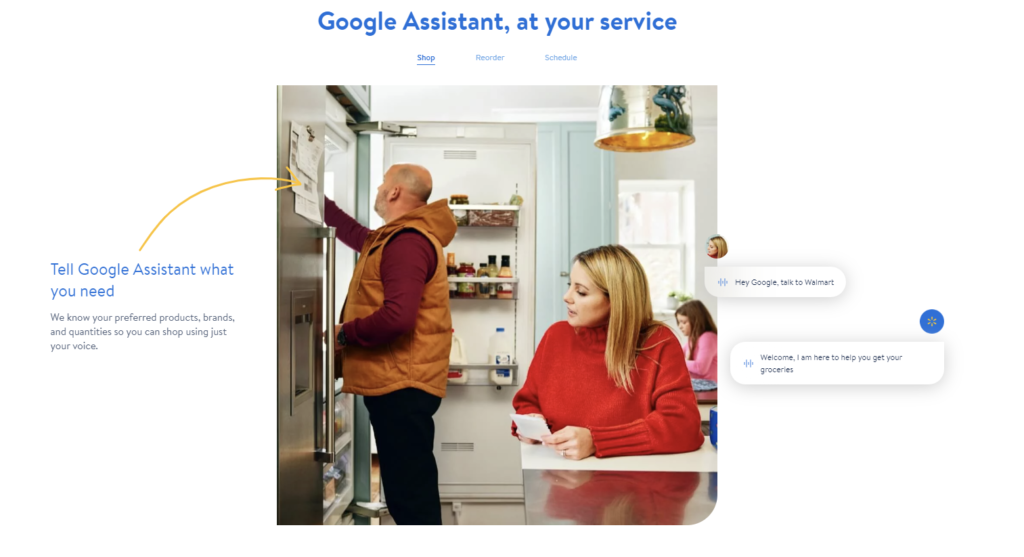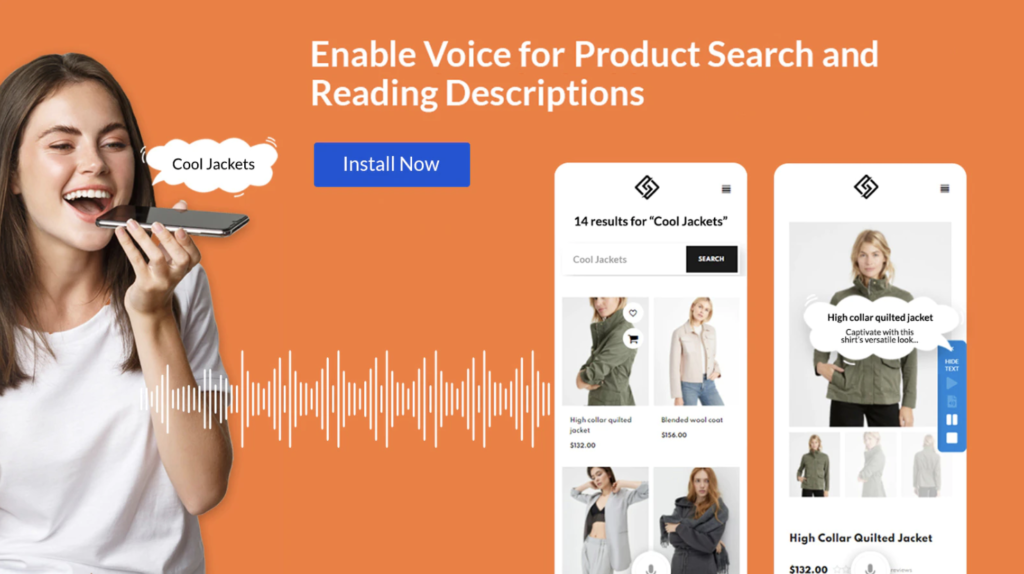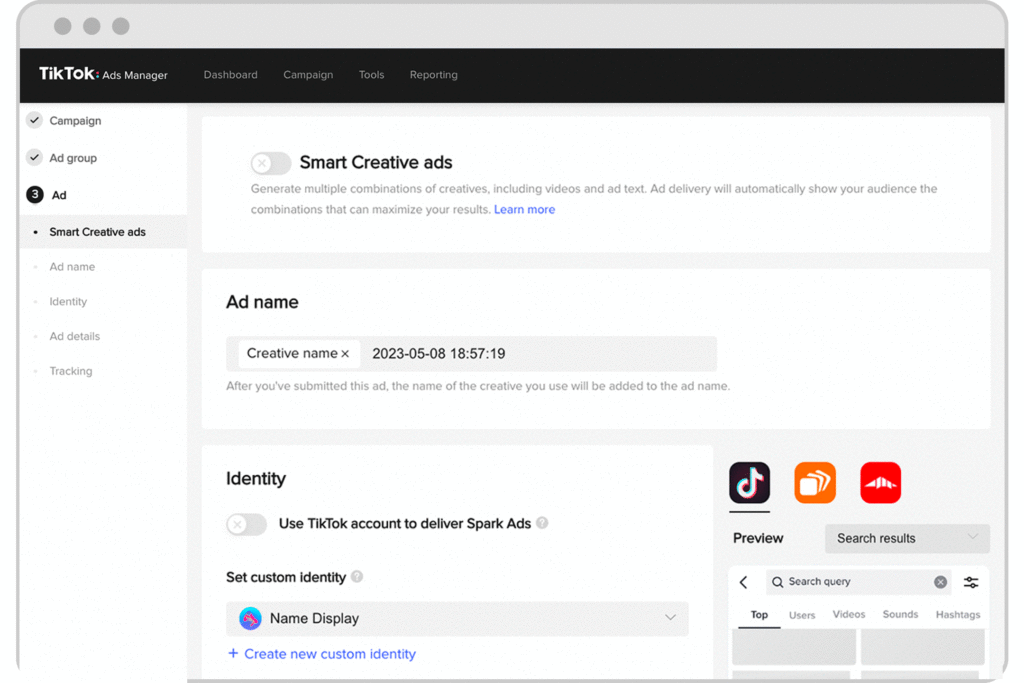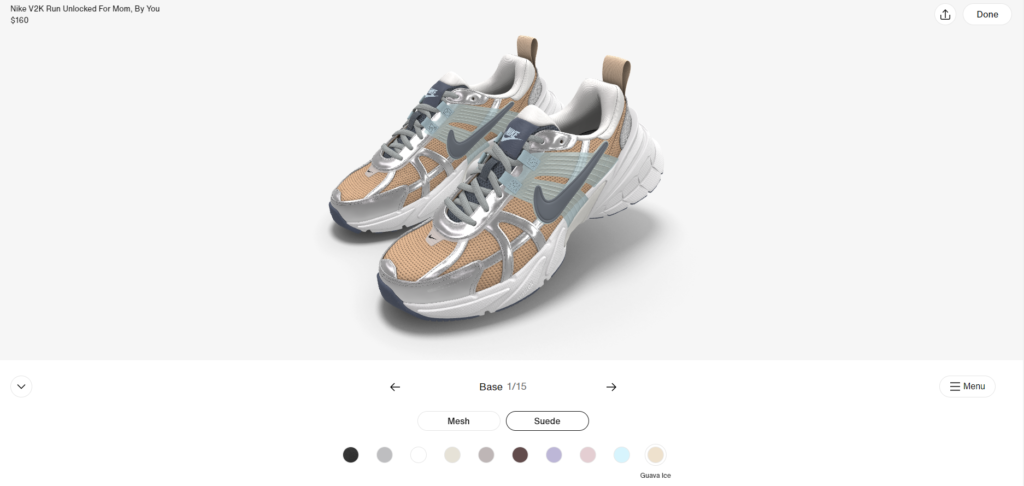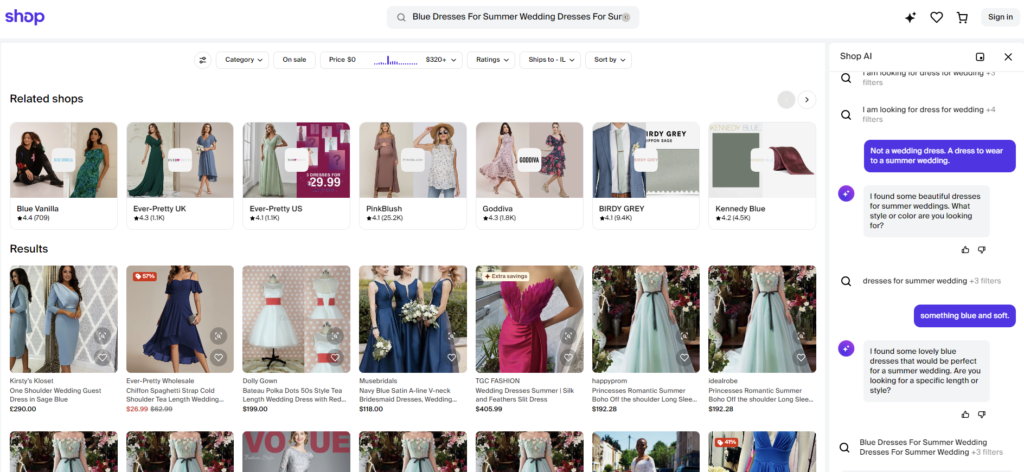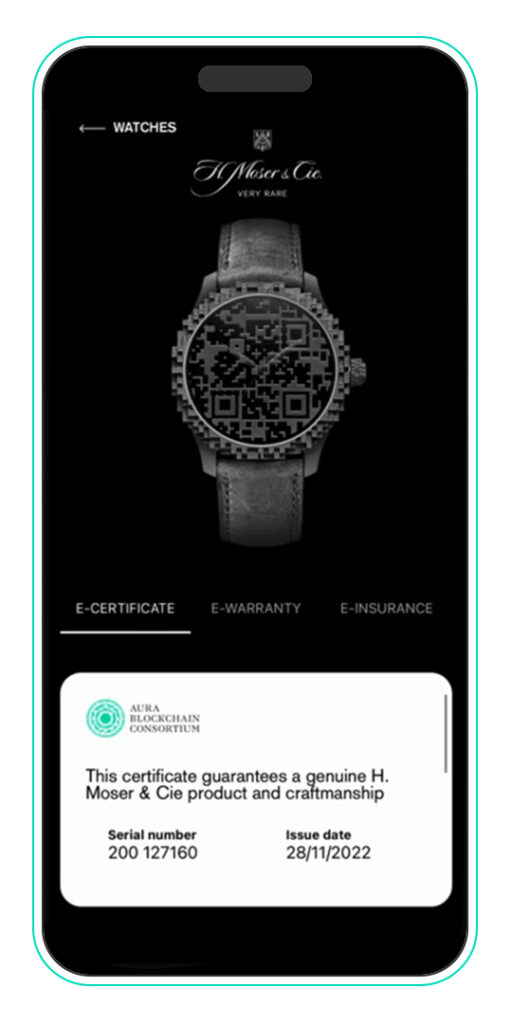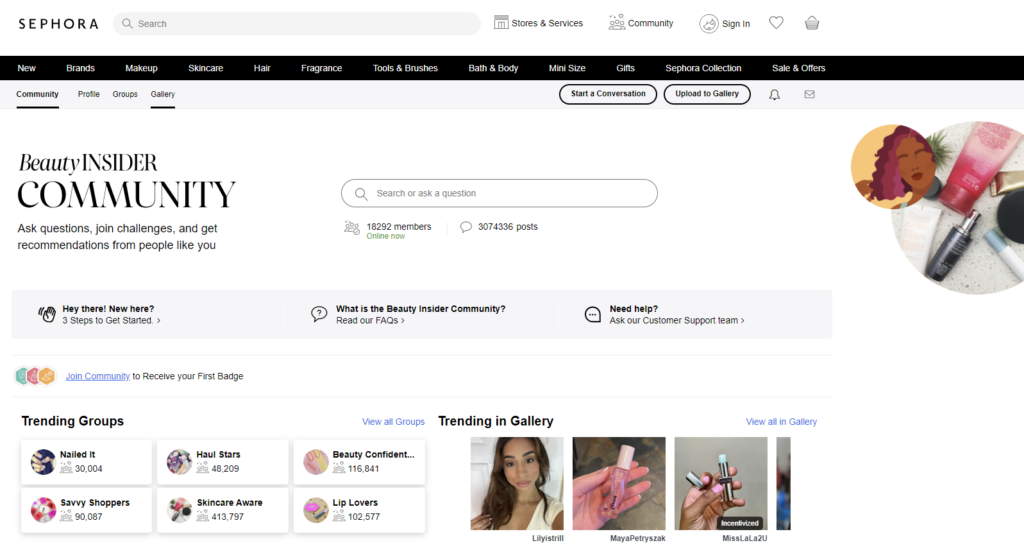In today’s fiercely competitive digital market, excelling in eCommerce marketing strategies is essential for standing out.
But there is a catch: When planning your strategy, you want to think of quality, not quantity.
This means investing in new technology to adopt more advanced tactics.
This post delves into seven innovative on and offsite eCommerce marketing strategies that not only attract potential shoppers but turn them into loyal customers — including:
- Leveraging voice commerce and smart assistants
- Capitalizing on PPC automation for efficient ad management
- Embracing interactive product customization tools
- Investing in AI-powered personal shopping tools
- Utilizing blockchain technology for enhanced authenticity verification
- Adopting next-gen loyalty programs using gamification
- Embracing predictive analytics for hyper-personalized experiences
Let’s jump in!
1. Leveraging Voice Commerce and Smart Assistants
Voice commerce might not immediately come to mind when considering eCommerce marketing strategies, yet its impact is profound. When implemented right, they can be a huge engagement driver, both on and off your website.
Voice commerce has been gaining momentum since the mid-2010s. However, the launch of Google Nest (featuring Google Assistant) in 2016 really pushed the capabilities of voice-activated shopping across multiple platforms.
For instance, Walmart integrated with Google Assistant to enable voice shopping on its app. This feature allows a potential shopper or existing customer to add items to their cart simply by speaking. Here, shoppers start with a command, like, “Hey, Google, talk to Walmart,” and then list the products they wish to purchase.
[Source: Walmart]
Imagine a boutique skincare brand that integrates voice commerce through Amazon Alexa. An existing customer can replenish their skincare products by saying, “Alexa, order my skincare routine from [Brand Name].”
This feature simplifies the repurchase process for regular customers and allows the brand to directly engage with consumers in their homes, increasing the likelihood of spontaneous purchases and enhancing customer retention and loyalty.
In a nutshell, voice commerce is an innovative eCommerce marketing strategy that leverages smart assistants to facilitate shopping experiences, offering hands-free shopping that appeals to tech-savvy consumers. And it’s growing. It is estimated that the total value of voice-assisted purchases will rise to $164 billion by 2025.
However, you don’t have to be a mega brand or marketplace to implement this marketing strategy.
How to Implement Voice Commerce for Your Store Brand
You can effectively implement voice commerce in your overall eCommerce marketing strategy in two ways.
One way is that you can integrate a smart assistant, such as Google Assistant API, into your website so that customers can use it directly on the site to search and filter products.
Or, secondly, on a simpler level, you could ensure your store and product pages are optimized for voice search. This is similar to how you would optimize for SEO (search engine optimization) in terms of keyword and product description optimization.
The latter entails tailoring your product descriptions and metadata to include more conversational long-tail keywords typical in spoken language and ensuring you keep content fresh and aligned with the latest eCommerce SEO practices for voice search.
The former, however, will require a little more time — and financial — investment. You would need to set up your store for voice-based store navigation by following these steps:
- Choose a voice recognition tool, such as Google Cloud Speech-to-Text, Amazon Alexa Skills, or Microsoft Azure Speech Service
- Map out the common queries and commands that users might use with voice navigation
- Hire a developer to integrate the chosen voice recognition API into your website’s backend
- Program how your store will respond to specific voice commands
- Test and tweak your voice navigation to ensure it functions correctly across all devices before launching
Alternatively, you could invest in a voice search Shopify app such as Searchanise or Speechify.
2. Capitalizing on PPC Automation for Efficient Ad Management
PPC automation is essential for maximizing both the efficiency and effectiveness of your eCommerce marketing strategies. Not only does it drastically reduce manual workload but optimizes ad performance for better ROAS. Additionally, the right automation tool will ensure:
- More efficient budget allocation
- Better targeting capabilities
- Real-time dynamic targeting adjustments
This includes personalized ads that adapt to market changes and directly address the shopper’s needs.
Let’s say you’re an online fashion retailer who specializes in seasonal apparel. By using PPC automation to manage your Google and social campaigns effectively across various product categories, you can dynamically adjust bids based on real-time fashion trends and user engagement levels.
During key seasons or product launches, you could then ensure that your automation system intensifies ad visibility for trending items to dynamically increase traffic, improve CTRs, optimize ad spending, and drive conversions. All of which improves your ROAS in a substantial way. (Some brands who have adopted PPC automation have seen as much as a 20X lift in ROAS.)
However, you need the right technology and tools; preferably something created specifically for eCommerce.
How to Implement PPC Automation for Your Store Brand
To automate your PPC and digital marketing campaigns, you need to set up the automation features available within each platform. Here are just a few:
- Google Ads automation features. Includes Smart Bidding, Responsive Search Ads, and Dynamic remarketing.
- Facebook and Instagram ad automation features. Includes automation rules, automated placements, Shopping Ads, lookalike ads, and dynamic ads.
- TikTok ad automation features. Includes automated product ads, automated rules, and TikTok Smart Creatives.
[Source: TikTok]
Bonus Content: How to Sell on TikTok Shop: Everything You Need to Know
However, it is far more effective to invest in a PPC automation tool that will manage and optimize all your eCommerce ads (in your entire eCommerce marketing strategy) in real-time.
This is where Traffic Booster, designed specifically for online stores like yours, comes in.
Here are just some of the digital marketing and social media platforms we handle your advertising for, depending on the tier you choose:
- Google Shopping ads
- Smart Shopping campaigns
- Dynamic remarketing ads
- Search and Dynamic Search Ads
- YouTube Shopping and action ads
- Smart Display campaign ads
- Dynamic retargeting ads
- Instagram Shop and Facebook advertising and acquisition ads
- Bing ads, TikTok ads, Pinterest ads, and more [Enterprise Edition]
3. Embracing Interactive Product Customization Tools
Interactive product customization tools either allow customers to personalize and modify products according to their preferences directly on the online store or give customers the ability to virtually try-on products.
These personalized shopping experiences increase your conversion chances and encourage repeat business, setting your brand apart from your competitors. They also serve as enticing features you can highlight in your marketing messaging that push ad engagement because of increased perceived value.
For example, let’s look at Nike’s “Nike By You” customization service that allows customers to design their own sneakers by selecting colors, materials, and even personalized text.
[Source: Nike]
This feature not only enhances the shopping experience but is also prominently featured in Nike’s marketing, which differentiates them from their competitors in the athletic apparel market, fostering customer engagement and increasing sales.
How to Implement Product Customization for Your Store Brand
The first thing you will need to do is pick the right tools and technology for your goals.
Let’s say you’re looking to install 3D visualization and interactive customization onto your online store. A tool such as Autodesk’s Configurator 360 or Threekit would be ideal. You would then need to create an intuitive interface that makes it easy for shoppers to customize products and then promote this customization as a marketing hook.
For instance, let’s assume you’re an online jewelry store that implements a 3D customization tool allowing your customers to design their own rings — choosing from metal, gemstone, and engraving options. You could then promote this feature in your social media marketing and email campaigns as a way to stand out from your competitors.
Alternatively, if you’re looking to implement virtual try-ons or augmented reality (AR) to help your shoppers visualize furniture in a home environment, pick an AR platform such as Google’s ARCore to create an AR experience. Or, as a Shopify store owner, first ensure that you are using a theme that supports 3D models and videos, and then use Shopify AR to embed AR functionality directly into your product pages.
[Source: Shopify]
4. Investing in AI-Powered Personal Shopping Tools
AI-powered personal shopping assistants have been game-changers in online retail. By leveraging advanced machine learning and natural language processing, they provide real-time, personalized shopping advice and product recommendations. This not only ramps up customer engagement but also drives eCommerce sales — key goals in any marketing playbook.
Bonus Content: 9 Merchant Chatbots on Facebook Messenger to Inspire You
Thanks to their ability to analyze real-time data, like past purchases and browsing habits, these assistants offer a tailored and interactive shopping experience. It’s like bringing the personal touch of high-end retail to the digital world, making customers feel special and boosting their loyalty to your brand. This heightened personalization leads to stronger brand connections, and, ultimately, higher conversion rates.
What’s more, these tools empower you to weave rich customer insights into your broader marketing strategies. Imagine crafting campaigns and promotions that hit the mark by aligning perfectly with your customers’ current needs and interests, much like Facebook’s Dynamic Ads, but across all your platforms.
Take the example of a mid-sized beauty retailer using an AI assistant (like Octane AI) to help existing customers and potential shoppers pick products that match their skin type and personal concerns. This tool doesn’t just enhance onsite conversions; it revolutionizes the entire shopping experience, extending personalized engagement even beyond the site to supercharge overall marketing effectiveness.
Bonus Content: We Analyzed 1000s of Online Stores, and Here Are the Top 29+ Marketing Mistakes You’re Making!
How to Implement AI-Powered Personal Shopping for Your Store Brand
This eCommerce marketing strategy can be as simple as choosing the right chatbot tool for your online store or investing in software that personalizes your entire shopping experience. The key is choosing the right AI tool or app to match your needs and budget. Thanks to the boom of NLG (natural language generation) like Chat GPT, the options are plentiful.
Here’s just a taste of what the Shop app is doing with its shopping assistant.
[Source: Shop]
Once implemented, your eCommerce shopping assistant can help you optimize PPC campaigns. It does this by analyzing customer data to identify high-converting keywords and trends that you can use to enable more-targeted and effective ad placements.
These assistants can also automate bid management in real-time, adjusting bids based on the likelihood of conversion for specific customer segments or behaviors. Real-time bid management and post-click optimization, such as providing personalized landing pages, are also affecting marketing applications of assistant shopper AI.
5. Utilizing Blockchain Technology for Enhanced Authenticity Verification
5. Utilizing Blockchain Technology for Enhanced Authenticity Verification
Blockchain authenticity verification is an advanced approach that enhances consumer trust, especially in markets where counterfeit goods are prevalent. Think NFTs!
NFT (non-fungible token) technology is best suited for higher-end products in which authenticity is crucial. It enables you to generate secure, unforgeable records of authenticity for your products that customers can verify. This leads to:
- Increased consumer confidence. By integrating blockchain technology, you can provide a tamper-proof record for each product’s origin and history, reassuring customers about its legitimacy and quality. This not only boosts consumer confidence but also elevates the customer’s purchasing experience, knowing they’re buying authentic products.
- More transparency in your supply chain. Blockchain technology enables customers to trace the entire life cycle of a product — from manufacturing to sale. This is particularly valuable for luxury items, organic goods, and pharmaceuticals.
- Enhanced brand reputation. Adopting blockchain doesn’t just future-proof your eCommerce business — it positions your brand at the forefront of technological innovation. This commitment to cutting-edge technology and customer safety enhances your brand’s reputation, setting you apart as a leader in your industry.
- Better conversion rates. Implementing blockchain technology not only enhances transparency and security but also significantly boosts your conversion rates. When customers feel confident about the authenticity and safety of their purchases, they’re more likely to complete transactions. This trust builds a solid foundation for customer retention, encouraging repeat business and positive word-of-mouth and influencer marketing that are crucial for sustained growth.
Bonus Content: How to Find the Best Influencers for Your eCommerce Brand
A real-life example of a retailer using blockchain for authenticity verification is the luxury goods company LVMH (Moët Hennessy Louis Vuitton). LVMH, along with Prada and Cartier, formed the Aura Blockchain Consortium in 2021. This platform provides customers with a digital certificate of authenticity for each luxury item they purchase that can be used to trace its origins and life cycle using blockchain technology.
[Source: Aura]
This joint initiative helps retailers bolster consumer trust and brand reputation — both of which drive marketing engagement. Aura is largely used for the added legitimacy this technology offers, enhancing consumer confidence in both brand messaging and the product.
How to Implement Authenticity Verification Blockchain Technology for Your Store Brand
To take advantage of this eCommerce tactic, you need to choose the right blockchain platform for your brand needs. Shopify apps and software like Verisart, UBITQUITY, or Ethereum can help you create decentralized apps for authenticity verification or NFTs. Then create smart contracts that define the rules for recording product data on the blockchain.
Next, integrate this blockchain technology with your existing inventory, and customer service and CRM systems, to automate the recording of product data at each step of the supply chain.
Once this is done, you can use your on and offsite digital, social media or email marketing campaigns to educate potential customers on how blockchain enhances your store’s product authenticity and how to check this information themselves. You can also create tutorials for your content marketing strategies (blogs, videos, etc.).
Here’s a hypothetical. A high-end online watch retailer implements blockchain technology to ensure the authenticity of their products. Then, they create smart contracts on their blockchain platform — such as Ethereum. This ensures that each watch’s serial number, date of manufacture, and the path it takes through the supply chain are automatically recorded on the blockchain. This creates a digital ledger that shoppers can access and use in secondary market selling.
But product authentication isn’t the only place this tech can be used to drive engagement.
6. Adopting Next-Gen Loyalty Programs Using Gamification
With next-gen loyalty programs, customers earn points or achievements by engaging in fun activities. This not only enhances their shopping experiences but also strengthens their loyalties to the brand. Whether it’s points, badges, or leaderboards, adding gamification to your loyalty programs will enhance brand engagement, increase participation rates, and help with brand-community building.
This is something mega-retailers Sephora have adopted with a lot of success. Their “Beauty Insider” program integrates advanced features to enhance customer engagement, boost eCommerce sales, and offer a good foundation for social media and other content marketing initiatives. Here are just some of these features:
- Tiered membership levels — Insider, VIB (Very Important Beauty Insider), and Rouge — based on annual spending
- Point system and rewards based on every dollar spent on their store
- Birthday gifts and seasonal promotions
- Beauty Insider Community, where members can share tips, participate in challenges, and even enter contests to win additional points or prizes.
[Source: Sephora]
The bottom line is that loyalty programs not only drive customer retention. They help to gain product and brand awareness through word-of-mouth, convert new customers, and engage new potential shoppers with content marketing and campaigns. It is a great topic to integrate into your influencer marketing campaigns and content.
You could also consider integrating cutting-edge rewards like NFTs, which can offer unique digital or physical goods that enhance the perceived value of participation. But that’s not to say you have to invest huge amounts of money to implement a high-performing loyalty program.
How to Implement Next-Gen Loyalty Programs for Your Store Brand
To implement this eCommerce marketing strategy, you first need to determine which customer actions you want to encourage, such as making purchases, writing reviews, or sharing products on social media. This will help you define your gamification strategy.
Next, decide on the type of rewards up for grabs (badges, points, membership levels, etc.), as this will determine the type of technology, app, or platform you should be investing in. Platforms like Smile.io or LoyaltyLion are popular among eCommerce businesses and offer extensive features that support gamified elements and integration with eCommerce platforms like Shopify.
Finally, promote your loyalty program through all your available channels. This can include everything from a Google Search ad, to a TikTok ad, or a quick tutorial video. In short, you want to ensure that customers are aware of it and understand how to participate.
Bonus Content: Winning TikTok Video Ideas and Best Practices [+ Examples]
How could this look in practice?
Let’s say you’re a mid-sized online retailer specializing in outdoor gear. You launch a loyalty program in which customers earn points not only for purchases but for outdoor activities they share on social media, linked to your brand’s products. These points could then be redeemed for rewards like limited edition gear or NFTs that represent unique digital art related to the outdoors.
You could even include a feature with monthly challenges enabling customers to compete to earn additional points and badges by completing specific activities, such as hiking certain trails or participating in community clean-up events.
Yes, in the long run, this does mean increased eCommerce sales. However, it also strengthens the brand’s community and aligns the brand’s values with those of its customers, enhancing customer retention and repeat purchases. Even better if you can tie your loyalty program into a robust affiliate program.
7. Embracing Predictive Analytics for Hyper-Personalized Experiences
Embracing predictive analytics for a hyper-personalized customer experience is an essential marketing strategy in eCommerce that leverages big data to optimize shopper interactions.
If you’re new to the concept, predictive analytics is a branch of advanced analytics that uses historical data, statistical algorithms, and machine learning techniques to identify the likelihood of future outcomes based on input data.
For instance, Google Analytics incorporates predictive analytics to some extent, by integrating enhanced predictive features into its analytics platform over time, such as predictive metrics and insights to help users forecast future trends, understand potential customer behaviors, and optimize marketing strategies.
In the end, when it comes to sustained eCommerce growth, personalization should be front and center of any high-performing marketing strategy.
Anticipating customer needs and preferences helps you create a more tailored customer journey designed specifically for them, because then you are able to better forecast customer behavior, personalize shopping experiences, optimize inventory and supply chains, as well as enhance overall customer engagement.
This is something Amazon are pioneers in. By leveraging vast pools of customer data along with sophisticated machine learning algorithms, they are able to offer personalized product recommendations to their users. To do this, they analyze past purchasing behavior, browsing history, and customer interactions to forecast what products individual customers might be interested in next.
[Source: Amazon]
However, you don’t need to be Amazon to capitalize on this powerful eCommerce marketing concept.
How to Implement Predictive Analytics for Your Store Brand
There are a wide variety of ways you can use predictive analytics in retail, including customer segmentation for target marketing, personalized product recommendations, inventory management and forecasting, churn prediction, and marketing campaign optimization.
Therefore, the first thing is to decide where in your eCommerce marketing strategy you need predictive analytics the most, and then choose the right tool. For instance — if you are looking to understand your LTVs (customer lifetime values) and forecast future revenue based on historical data, then Lifetimely could be a good choice.
If you’re looking to pinpoint customer value early on in their journey, you could use Retina AI to predict long-term customer value.
Alternatively, you can use predictive analytics tools such as IBM Watson, Salesforce Einstein, or Google Analytics predictive metrics, which can handle large datasets and provide actionable insights.
Regardless, once you have a goal and tool in place, you can then use the insights you gathered to create personalized marketing campaigns, product recommendations, or onsite messaging tailored to your customer’s predicted needs and preferences. Let’s look at a quick example of this in practice.
Imagine you are an online fashion retailer using predictive analytics to forecast customer preferences for upcoming seasons. By analyzing past purchase data and online behavior, you can quickly identify trending styles and sizes that are likely to be popular. This information would then be used to adjust inventory levels (in real-time!) and create personalized email marketing campaigns that highlight items each customer is most likely to be interested in, significantly increasing the chances of purchase and enhancing the overall customer satisfaction.
Bonus Content: How to Build a Winning Multi-Channel Marketing Strategy.
Final Thoughts: When It Comes to Upgrading Your eCommerce Marketing, Less Is Definitely More
Whether you decide to upgrade your marketing automation, change marketing channels, or invest in predictive analytics tools, you want to start slow. This means implementing one marketing channel, strategy, onsite promotion, or element at a time, then optimizing and tweaking for peak performance before diving into the next eCommerce strategy.
Ultimately, you need to find the right strategies that work for your specific eCommerce business, products, and target audience to ensure you achieve the desired ROAS.
This is what sets apart any old tactic from a successful eCommerce strategy that doesn’t only boost online sales, but builds customer retention and loyalty.

Nicole is a content writer with over sixteen years experience and flair for storytelling. She runs on a healthy dose of caffeine and enthusiasm. When she's not researching the next content trend or creating business content strategies, she's an avid beachgoer, coffee shop junkie and hangs out on LinkedIn.
Recommended articles
 Facebook Ads for eCommerce: 16 Strategies, Examples & Tips
Facebook Ads for eCommerce: 16 Strategies, Examples & Tips
 How to Build a Winning eCommerce Ads Strategy
How to Build a Winning eCommerce Ads Strategy
 Google Ads for eCommerce: Everything You Need to Know
Google Ads for eCommerce: Everything You Need to Know
 10X Your Traffic with PPC Management Software
10X Your Traffic with PPC Management Software
Comments
Powered by Facebook Comments

